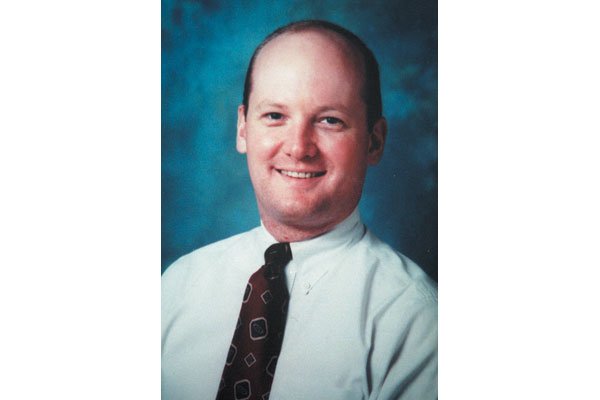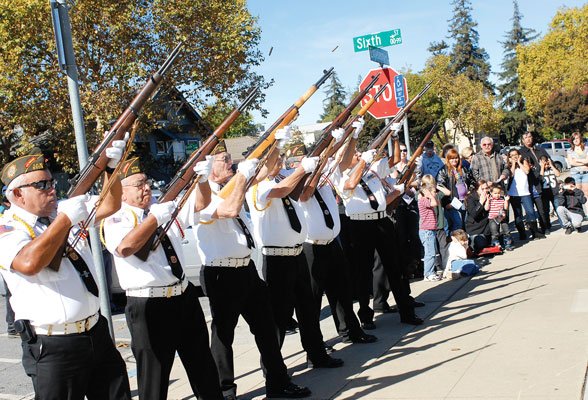Just weeks after coming on board, Gilroy’s new city
administrator has already reworked a budget choked by a $6.2
million deficit, mainly by imposing a hiring freeze
”
until revenues are sufficient to support a thaw.
”
Just weeks after coming on board, Gilroy’s new city administrator has already reworked a budget choked by a $6.2 million deficit, mainly by imposing a hiring freeze “until revenues are sufficient to support a thaw.” Tom Haglund will share his cost-cutting plan with the city council Wednesday night, about a month before the body must pass next year’s budget.
City Administrator Tom Haglund’s proposed $44.7 million expenditure plan for fiscal year 2008-2009 represents a $4.5 million cut from the FY08-09 budget that staff proposed last year, before the economy began to slump. Despite also lowering revenue predictions by $3.9 million to $40.7 million, the new budget still runs a nearly $4 million deficit. That is partly because it “ensures the provision of public safety and core business services,” but it also aims to eradicate the multi-million deficit by 2012, lest the city’s robust reserves run dry, according to a letter Haglund wrote to the city council last week.
In it, he calls for all 24 of the city’s vacant full-time positions remain frozen through at least 2009. There are 277 full-time city employees. In addition to the hiring freeze, 30 forecasted positions have been “defunded” through 2013 and will remain so unless needed to fulfill basic operations or until the council orders a specific position to be filled, according to Haglund.
Haglund called the hiring freeze “the most significant change” to the budget as it allows for “the redeployment of personnel within the city as attrition occurs over the fiscal year.”
Beyond this, each of the city’s five core departments (public safety, community services, community development, finance and administration) cut fat from their own maintenance and operation budgets. This included cutting travel and office supply costs, uniform expenses, reducing after-school programs, park maintenance, custodial services and contributions to the Economic Development Corporation and Gilroy Visitor’s Bureau.
Cuts also came by delaying projects and reducing part-time employment hours and overtime pay. When it comes to fulltime salaries, however, council members like Perry Woodward have said high-paid employees need to get real and brace for cuts, and earlier this month Mayor Al Pinheiro predicted change.
“This council is going to be making some decisions that might not be too popular, but if we don’t make decisions that are tough today, then we’ll have no choice,” Pinheiro said, alluding to the bankrupt city of Vallejo, a city of about 116,000 people less than 100 miles from Gilroy. Officials there have largely blamed personnel and benefits costs for their financial quandary.
“If you come along with us and see what we have to do up here and the kind of numbers we’re given, then hopefully when we have to talk, you’ll understand,” said Pinheiro, addressing the city’s four unions. Earlier this month – after 22 years of laying dormant – the city’s top-level employees and managers who earn an average of $106,000 a year asserted their formal union status to more effectively bargain with the city council.
Unions aside, some of these general fund savings will supplement projects such as the art center and new library that normally receive money from restricted funds that were hard hit this year due to fee shortfalls.
“Generally, work will continue on projects although at a reduced pace given that a number of positions will be frozen and the fact that the associated revenue source may not be available to fund the various stages of projects.” Such projects include remodeling the former police department station, remodeling city hall, remodeling the Las Animas and Chestnut fire stations and technology upgrades.
“In the past two and a half weeks these projects expenditures have undergone substantial review and revision in order to respond to a changing economic environment,” Haglund wrote. “Gilroy, like most California cities, is experiencing a significant loss of projected property and sales taxes, compared to projections, because of the economic downturn in both the housing and broader retail and service sectors.”
Last year the city projected about $15.2 million in sales tax revenue. Now it expects about $14 million in sales tax, which subsidizes about 44 percent of the general fund. That fund is the source of the city’s discretionary money, the vast majority of which finances city salaries and police and fire services. To finance new infrastructure and new city buildings, the city relies on fees it levies on developers, but since the housing market has slowed dramatically throughout the last year, officials also expect these coffers to come up 75 percent short, or about $14 million.
“Yet, because of long term financial conservatism, Gilroy is better positioned to deal with the current economy than many cities because of our reserve of approximately $26 million,” Haglund wrote. Without addressing the budget now, council members have cautioned that this pecuniary cushion could shrink to nothing in four or five years. The city will draw $4.5 million from the fund to compensate for this year’s deficit, according to Haglund.














